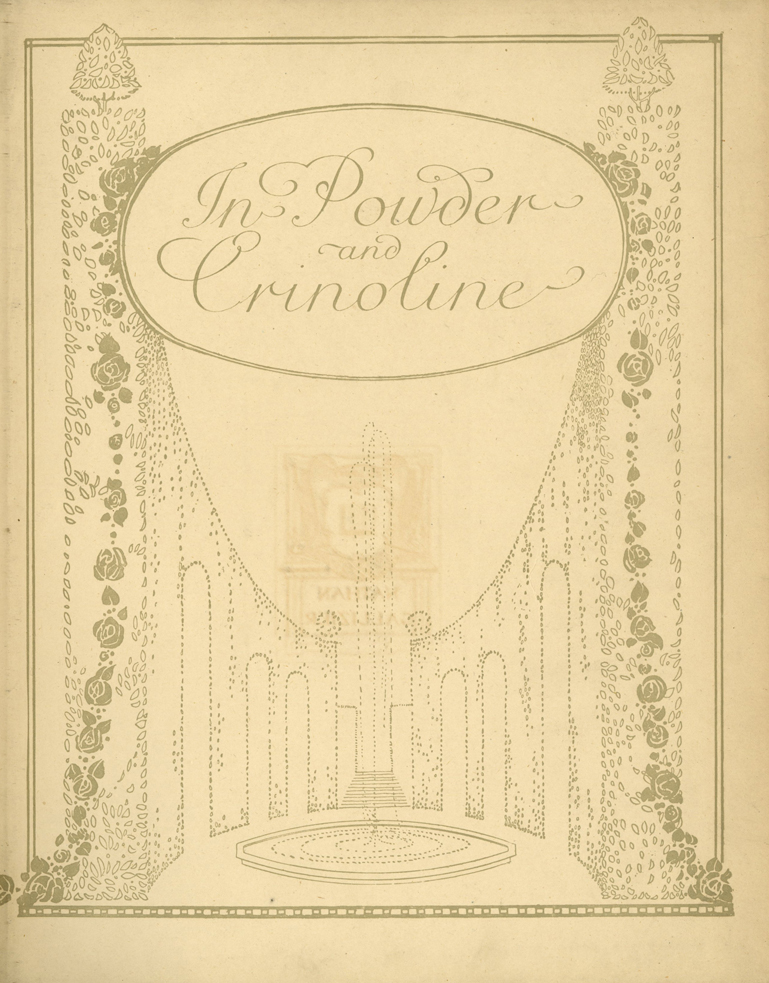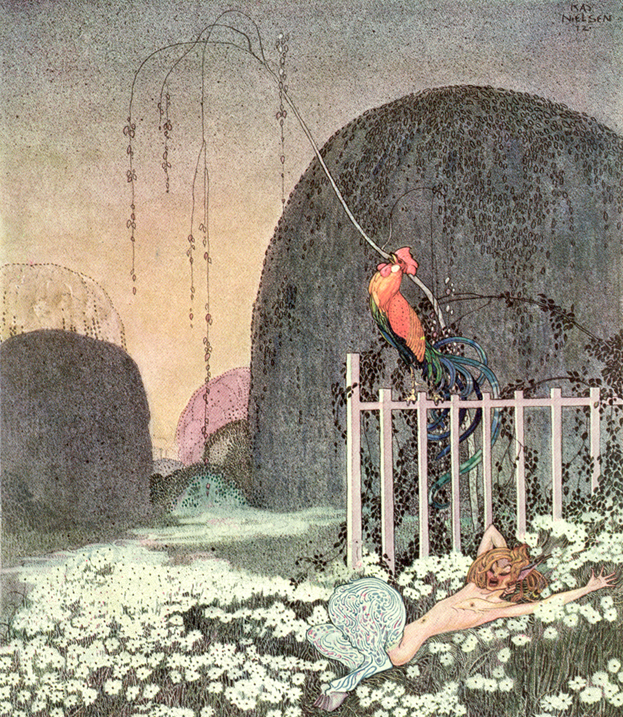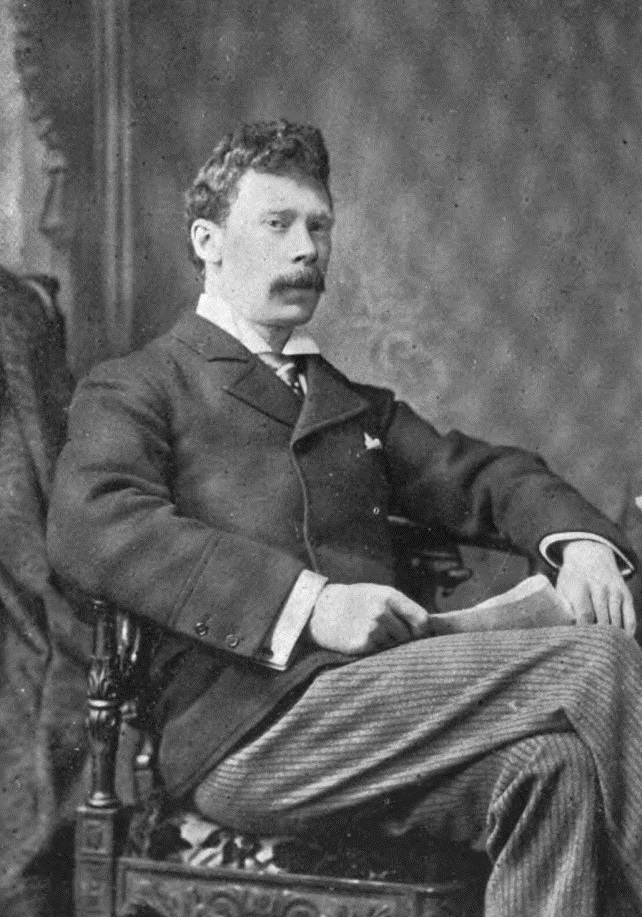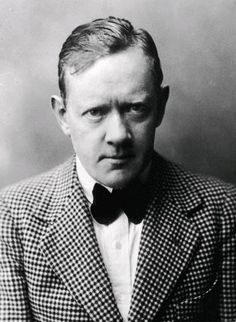By: Sydney Vollmer
 Over the next few months, the Archives & Rare Books Library will open another of our exhibit websites that introduces our extensive collection of fairy tales and folklore for research and teaching. There are many volumes to sift through, but one I recently pulled caught my eye. In Powder and Crinoline doesn’t contain any stories with which I was familiar, but when I paged through it, I was more than a little pleasantly surprised.
Over the next few months, the Archives & Rare Books Library will open another of our exhibit websites that introduces our extensive collection of fairy tales and folklore for research and teaching. There are many volumes to sift through, but one I recently pulled caught my eye. In Powder and Crinoline doesn’t contain any stories with which I was familiar, but when I paged through it, I was more than a little pleasantly surprised.
This collection of stories retold by Sir Arthur Quiller-Couch (1863-1944) was first published in 1912 by Hodder and Stoughton. “Q” was a Cornish writer who was well known for his fiction and anthologies, particularly for his Oxford collection of English poetry in 1900. In the preface to Powder and Crinoline, he speaks of his first impression of the work:
When Messrs. Hodder and Stoughton told me that Mr. Kay Nielsen wished to employ his pencil upon a volume of Fairy Tales [sic], to be called In Powder and Crinoline, I answered that the title and notion it conveyed were, in my opinion, capital…but that if anyone knew where to find in the age of Crinoline a stock of such tales as we wanted I should be obliged by the information.
The Danish Nielsen (1886-1957), an artist in the “golden age of illustration” with the likes of Edmund Dulac and Arthur Rackham, primarily worked in his home in Copenhagen and provided the artwork for many Scandinavian stories and legends.
Blessedly, they found just the tales they so desired and arguably the most famous work from this collection is the story of “The Twelve Dancing Princesses.”
In the briefest summary I can write, a common boy named Michael wishes for a great destiny. A woman in a golden gown appears to him in a dream and orders him to leave home for the kingdom where twelve princesses live. There, she says, he will marry one of them. Michael sets off on this adventure and becomes the gardener’s helper at the palace. When he sees the youngest princess, Lina, he knows he wants to marry her. Each morning, he delivers a unique bouquet to all of the twelve princesses.
These princesses, like many of the princesses we know and love, are not well-behaved girls. The king has a terrible time keeping track of them. Every night they go to bed, but in the morning all of their dresses are torn and their shoes have holes in the bottoms. Having explored all options, the king finally offers one of his daughter’s hands in marriage to whoever can figure out where it is they go at night and how they get there. Princes near and far stand wait at their door all night, but no one can solve the mystery. Michael wishes he could wager a guess.
That night, the woman in the golden gown appears in another dream and gives  Michael two laurel bushes saying that if he follows her instructions of planting, raking, and reciting a poem to them, each will give him exactly one wish. Michael wakes up to find the bushes next to him and gets to work planting. From the first bush, he wishes for invisibility. With the new power, he sneaks into the room of the princesses and follows them at night as they escape through a secret passage in their floor and meet princes by the shore. They get in boats and arrive at a ball where they dance the night away. Michael finds out that none of the princes have told the king about his daughters because they were given a potion which left nothing in their hearts but the love of dance.
Michael two laurel bushes saying that if he follows her instructions of planting, raking, and reciting a poem to them, each will give him exactly one wish. Michael wakes up to find the bushes next to him and gets to work planting. From the first bush, he wishes for invisibility. With the new power, he sneaks into the room of the princesses and follows them at night as they escape through a secret passage in their floor and meet princes by the shore. They get in boats and arrive at a ball where they dance the night away. Michael finds out that none of the princes have told the king about his daughters because they were given a potion which left nothing in their hearts but the love of dance.
 The morning after they return, Michael puts flowers in Lina’s bouquet that she saw on the way to the ball. When she finally figures out Michael followed them, she confronts him. Michael assures her he has no desire of telling the king. Eventually, Lina tells her eldest sister what happened and all the princesses demand that to show his loyalty to them, Michael must accompany them to the ball. He goes to the second laurel and wishes to be dressed like a prince. The wish is granted and he spends the entire night dancing with the woman he loves.
The morning after they return, Michael puts flowers in Lina’s bouquet that she saw on the way to the ball. When she finally figures out Michael followed them, she confronts him. Michael assures her he has no desire of telling the king. Eventually, Lina tells her eldest sister what happened and all the princesses demand that to show his loyalty to them, Michael must accompany them to the ball. He goes to the second laurel and wishes to be dressed like a prince. The wish is granted and he spends the entire night dancing with the woman he loves.
 At the end of the night, when the potion is presented to him, he willingly takes the cup. Princess Lina screams out that she would rather marry a gardener than have his heart be changed. Happy his love is reciprocated, Michael throws the cup to the side and tells the king about the princesses when they return to the kingdom. He gets to marry Lina and become a prince, and his story ends happily.
At the end of the night, when the potion is presented to him, he willingly takes the cup. Princess Lina screams out that she would rather marry a gardener than have his heart be changed. Happy his love is reciprocated, Michael throws the cup to the side and tells the king about the princesses when they return to the kingdom. He gets to marry Lina and become a prince, and his story ends happily.
Of course Sir Quiller-Couch tells it much better than I, but it isn’t the writing that sets this story above other fairy tales—it’s the illustrations. Never in my life have I seen something so vibrantly colored with such ornate detail as I have in this collection. You should come to the library to see these pictures for yourself, as they were all handcrafted and meant to be looked at up close. The scholarly importance of the tales and the illustrations which accompanied them is considerable, not only in a literary sense, but in educational and psychological aspects as well.
 In my next blog, I will tell you all about illustrator Kay Nielsen’s life as well as his process for creating these drawings. For now, enjoy the beauty of something created by the human mind and hands.
In my next blog, I will tell you all about illustrator Kay Nielsen’s life as well as his process for creating these drawings. For now, enjoy the beauty of something created by the human mind and hands.
Working in the Archives and Rare Books Library, I have a lot of books I can brag about holding and flipping through, but this quickly made its way to the top of that list. Come appreciate these works and let yourself enjoy all the whimsy like you did as a child. ARB is open Monday through Friday, 8:00 am to 5:00 pm, and we’re located on the 8th floor of Blegen Library. You can call us at 513.556.1959 or email at archives@ucmail.uc.edu. Visit us on the web at http://www.libraries.uc.edu/arb.html and our Facebook page can be found at https://www.facebook.com/ArchivesRareBooksLibraryUniversityOfCincinnati where we post all sorts of delights about our various archival and rare book collections every day.


